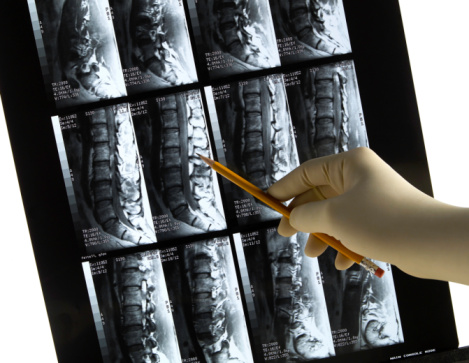The 411 on scoliosis

Did you know that scoliosis impacts two to three percent of the population? That’s about 7 million people in the U.S., according to the National Scoliosis Foundation.
Scoliosis is defined as a spinal curvature that is more than 10 degrees sideways. The condition can develop from a traumatic incident, tumors, improper posture and family genetics, according to Dr. Kamal Ibrahim, pediatric-orthopedic surgeon at Advocate Good Samaritan Hospital in Downers Grove, Ill., But in more than 80 percent of cases, the cause is unknown, therefore it is called idiopathic scoliosis.
Dr. Ibrahim says that scoliosis most commonly develops at an early age, between 10 and 15-years-old. Images are taken of the spine to determine if the patient has the condition. Scoliosis can develop at any age, but the most common occurrences are in the early teens,” Dr. Ibrahim says.
“To diagnose scoliosis, an x-ray will show the spinal curve and rather than a straight line, we would see a curve looking like an “S” or a “C,” he explained.
Dr. Ibrahim says that although there aren’t always noticeable signs of scoliosis, some symptoms could include back pain and body changes like abnormal spine curvature when bending down, uneven shoulders and waist or prominent shoulder blade.
He says children should be routinely checked at their annual physicals.
“Scoliosis can considerably diminish the quality of life if left untreated and progresses,” he says. “It can cause severe pain, limit activities and even affect heart and lung functions. Self-esteem and other psychological problems can also develop.”
Dr. Ibrahim says early diagnosis is important in kids.
“Concern comes when a child develops scoliosis while they are still growing, we can see the condition worsen,” he says. “Frequent check-ups are recommended.”
Treatment Options
For growing children with curves between 25 and 45 degrees, a brace can help to halt further progression of scoliosis, he said.
“Patients that have more dramatic curves, greater than 50 degrees, may be recommended for surgery,” Dr. Ibrahim said. “This treatment option will help to correct the curve and also prevent progression of the curve.”
This procedure involves placing metal implants onto the spine with rods attached to align the spine and hold it in place.
Dr. Ibrahim says that if you suspect your child may be developing a curvature in their back to talk to their physician right away.
Related Posts
Comments
One Comment
About the Author
Sarah Scroggins, health enews contributor, is the director of social media at Advocate Health Care and Aurora Health Care. She has a BA and MA in Communications. When not on social media, she loves reading a good book (or audiobook), watching the latest Netflix series and teaching a college night class.


















My niece has scoliosis, and I want to help her. I had no idea that a brace can help halt further progression of a curve of 25-45 degrees more. Another thing to consider is to get help from a doctor that is local. That way, it will be easier to make and keep appointments.